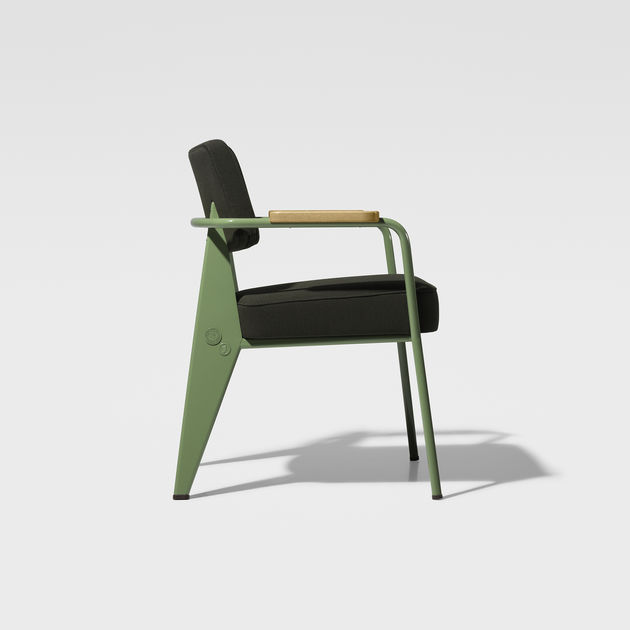The partnership between Swiss furniture specialist Vitra and Dutch denim brand G-Star RAW exemplifies a distinctive fusion of design philosophies, primarily focused on innovative workspace solutions and product reinterpretations.
Prouvé RAW Office Edition: A Key Collaboration
A landmark project for Vitra and G-Star RAW is the Prouvé RAW Office Edition. This initiative involved reinterpreting iconic designs by French architect and designer Jean Prouvé, adapting his industrial classics for contemporary work environments with G-Star's distinct material and aesthetic sensibility.
Key characteristics of this edition included:

- Industrial Authenticity: Maintaining Prouvé's signature structural logic and material honesty, often using steel and solid wood.
- Contemporary Adaptation: Updated finishes, a muted color palette reflective of G-Star's identity, and details suited for modern office functionalities.
- Subtle Branding: G-Star branding elements were integrated thoughtfully, complementing the original design integrity.
The collection featured items such as desks, office chairs (including Fauteuil Direction and Chaise Tout Bois), and lighting, all embodying a utilitarian yet refined aesthetic.
Design Synergy and Philosophy
The collaboration thrives on a shared appreciation for:
- Functionality and Ergonomics: Vitra's expertise in creating comfortable and efficient work environments is paramount.
- Material Innovation and Durability: Both brands emphasize high-quality, robust materials designed for longevity, drawing from G-Star's utilitarian roots and Vitra's design heritage.
- Timeless Design: The focus is on reinterpreting classics or creating new pieces that transcend fleeting trends.
Impact and Significance
The Vitra G-Star collaboration, particularly through the Prouvé RAW Office Edition, is recognized for its successful cross-pollination of industrial design, fashion aesthetics, and furniture manufacturing. It demonstrates how historical designs can be respectfully modernized for new contexts, highlighting a mutual commitment to craftsmanship, sustainable thinking through longevity, and an understated, functional style.







